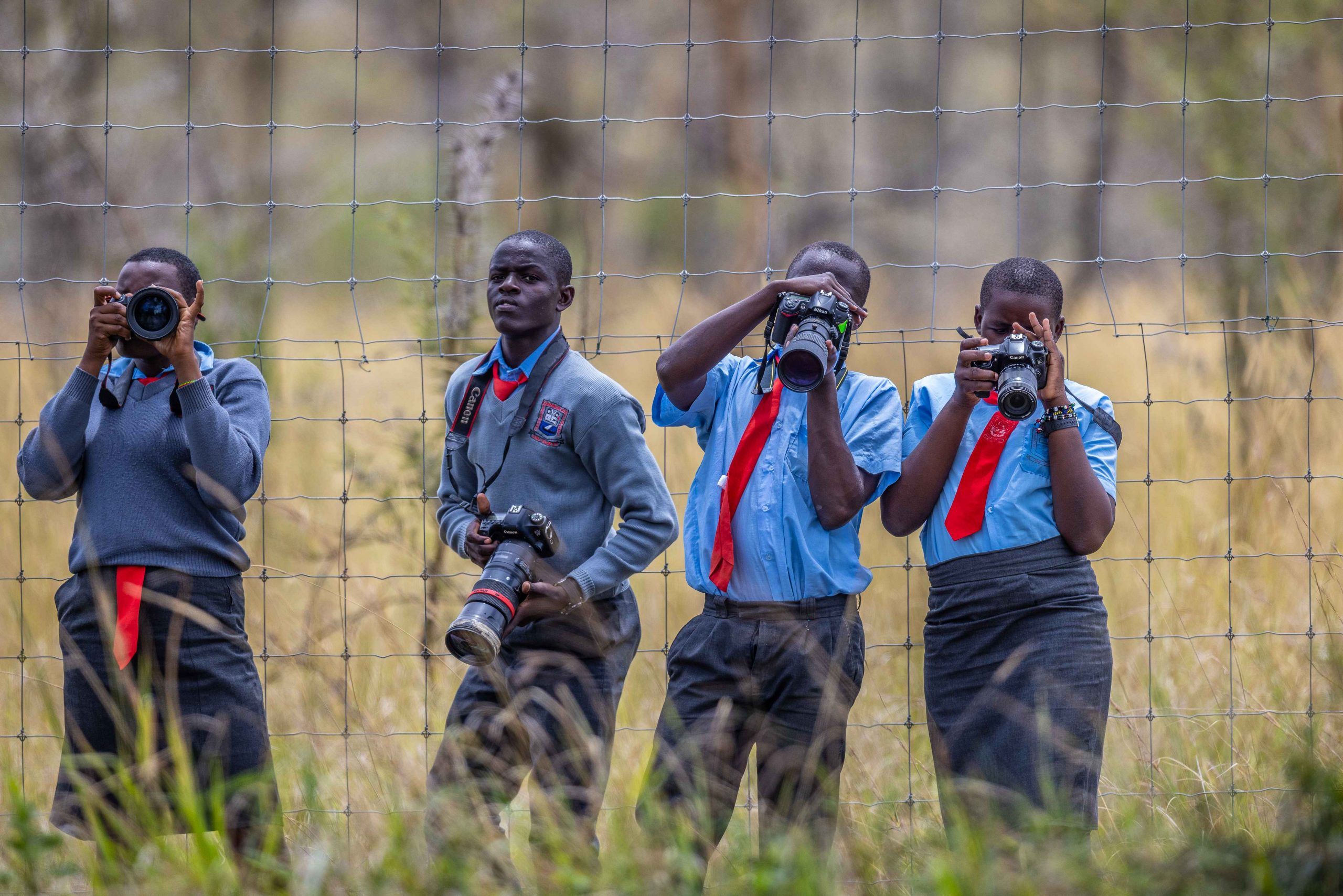Through the Lens: Revolutionising Environmental Education with Conservation Photography
By Elsie Ashiono
Conservation photography is like a strong thread that connects science, art, and advocacy. It is a unique hands-on approach that carries an unparalleled impact, which helps us show and tell about the beauty of nature, the need to protect it, and why it matters, using pictures. This tool, often underutilized, holds the potential to revolutionize the way we educate about environmental issues. It is important to note that it is used to raise awareness and promote the protection of species, not to be mistaken for nature photography which focuses more on the aesthetic beauty of the world.
Working as an Impact Environment Educator, I can attest that visual engagement is a cornerstone of effective learning. The traditional Kenyan school curriculum often lacks the captivating power of visuals, leaving learners struggling with complex issues in environmental and other subjects as well. Imagine trying to understand concepts such as volcanicity, or the topography of our country without the use of pictures. Photography fills this void, inviting students to explore intricate ecological concepts through captivating images. By visually representing complex ideas, learners cultivate a deeper understanding of environmental challenges that shape our world.
In building a library of visual references, photography becomes a bank of knowledge for learners. Each picture captures a moment in time, preserving the essence of environmental issues for future reference. This visual catalog not only aids in knowledge retention but also serves as a reminder of the progress made and the challenges that persist. On a visit to Kamasengre Secondary School in Rusinga Island, we assigned some students to take pictures of their immediate surroundings and as many birds as they could find. Upon completion of this task, these young talented students were able to see that the most beautiful pictures taken were of the birds up high on the trees. “ Look! I got a shot of one building a nest!” one student said as we gathered back to review the images. In this simple exercise, we were able to learn that we needed to plant more trees, not only to make the school beautiful but also to allow wildlife to build their little homes.
However, the true magic of photography lies in its ability to evoke an emotional connection. A single image can encompass a wide range of narratives, enabling viewers to relate on an emotional level. These visual narratives inspire empathy and drive home the urgency of environmental conservation, spurring action beyond mere textbook knowledge.
Let's reflect on how a single portrait image of the late Nobel Laureate Prof. Wangari Maathai carrying a tree seedling has inspired thousands of children to pursue environmental studies or become conservationists, now leading projects, advocating for policy change, and even street marches to demand change. I met one, his name is Elvis and he wants to own a business so that he can buy his first Canon camera and travel to all the national parks in Kenya as a photojournalist. “I want to show how giraffes are all unique because of the print on the skin but important in the food web.” Conservation photography transcends its role as an educational tool, becoming a catalyst for action.



Kamasengre Secondary students taking images of wildlife at Ruma National park.
How can an ordinary Kenyan join us in wildlife conservation using photography? The opportunities are endless. But the easiest way is using mobile phones. We are blessed to have rich biodiversity and access to wildlife in our national parks or if you are lucky, right in our compounds in most rural areas. So the next time you come across a beautiful zebra or a monkey munching on a sweet mango, snap a picture. Use that as an opportunity to tell the world about the beautiful animals you will encounter on your way to a certain town. Be bold and show them about the coexistence of this wildlife or if there has been any conflict and why this happens. As the saying goes, a picture is worth a thousand words. So you may only need one picture to tell this story.
In today's digitally driven landscape, multimedia literacy is paramount. As information spreads predominantly through online photos and videos, the ability to understand and create visual content is essential. Photography equips us with this vital skill, ensuring we navigate the complexities of the modern world with confidence and competence. From critical thinking and observation to analysis and creative expression, the learners we engage embark on a journey of self-discovery. The act of framing a compelling photograph requires a synthesis of these skills, nurturing a generation of gifted communicators and problem solvers.
I am looking forward to another year of visiting more schools through the visual ecological literacy program to find more passion and talent in youth who love wildlife. I often have a hard time containing the excitement of learners while introducing the program of the day, when a table filled with an array of cameras has been propped next to me. But that's a beautiful struggle to have as an educator. I am perfectly okay with it.
© TonyWild 2024. All Rights Reserved. Contact info@tonywild.co.ke to license, purchase or feature

